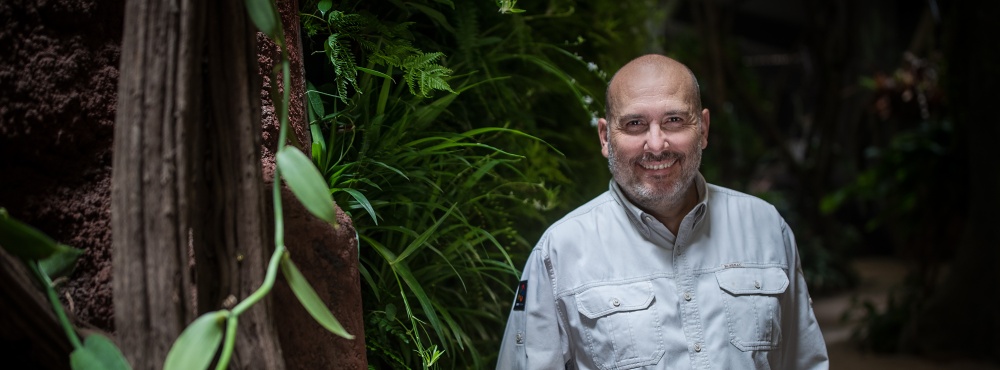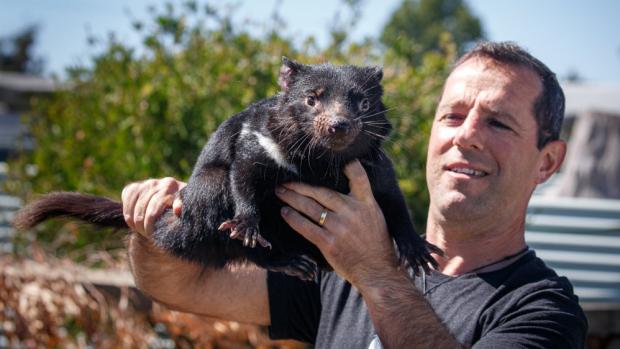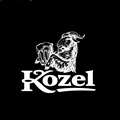Mrs Nutmeg, Aniseed, Laurel and Mr Sumac

In a few days, it will be half a year since Dave Schaap sent me a photo from Tasmania’s Hobart Airport. It was of a concrete runway with two carts in the foreground. A sign above one of them – with four wooden crates – read: Ready to load. “At last!” I cried out in joy.
 Dave Schaap with “Mr Sumac” in Cressy. Photo: Miroslav Bobek, Prague Zoo
Dave Schaap with “Mr Sumac” in Cressy. Photo: Miroslav Bobek, Prague Zoo
Looking at the picture brought back memories of the hall at Hobart Airport. It is decorated with sculptures of luggage with Tasmanian devils frolicking on it. It almost gives the impression that these remarkable marsupials are Hobart’s most frequent travellers. However, for the time being, the four devils ready to travel to Prague were rare exceptions. Tasmania has offered this living symbol to just two European zoos, Prague Zoo being the second.
The Tasmanian devil (or even “Beelzebub’s pup”) is now the largest carnivorous marsupial. It got its name due to its appearance and behaviour. Predominantly black in colour with devilishly red ears, bared sharp teeth, a ferocious growl and aggressive behaviour (though this is mostly not the case), all this, together with fears that it could kill farm animals, moved it into the category of extremely unpopular creatures. It was therefore relentlessly hunted in Tasmania, where it found its last refuge.
However, as I mentioned, nowadays the Tasmanian devil’s position is completely different. It has become a symbol of Tasmania and the local government is doing its utmost to preserve it for the future. Killing devils is a thing of the distant past, but for the last quarter century they have been plagued by a completely different threat: transmissible facial cancer. There were even fears that this disease might wipe out the devil altogether. Therefore, insurance populations have been created in captivity as well as in the wild.
The four Tasmanian devils that were waiting to be loaded on a plane flying for Prague six months ago, which will be unveiled to the public today, are part of a programme to save this exceptional species. Because devils have been successfully bred in captivity in Tasmania and the Australian mainland, it was decided that they would also be sent to selected American and European zoos. Prague Zoo is one of the first.
“Our” four devils come from the captive management site in Cressy northern Tasmania. Last March in Cressy, Dave Schaap, who accompanied the devils to Prague, first showed us two devils from this quartet; the female Nutmeg and the male named Sumac. Even then, I thought that the bellicose Nutmeg could become one of our zoo’s biggest celebrities. Dave later added the females Aniseed and Laurel (yes, all four devils really are named after spices; the joeys, born in 2018, were named in Cressy).
After quarantine, acclimatising the devils to the new environment and the delay caused by the pandemic, you can finally see them in our Darwin Crater as of today. Come and welcome Ms Nutmeg, Ms Aniseed, Ms Laurel and Mr Sumac – and see for yourselves how wonderful they are!
ZOOPRAHA.CZ
Contacts
- The Prague zoological garden
U Trojskeho zamku 120/3
171 00 Praha 7
Phone.: (+420) 296 112 230 (public relations department)
e-mail: zoopraha@zoopraha.cz
Others








